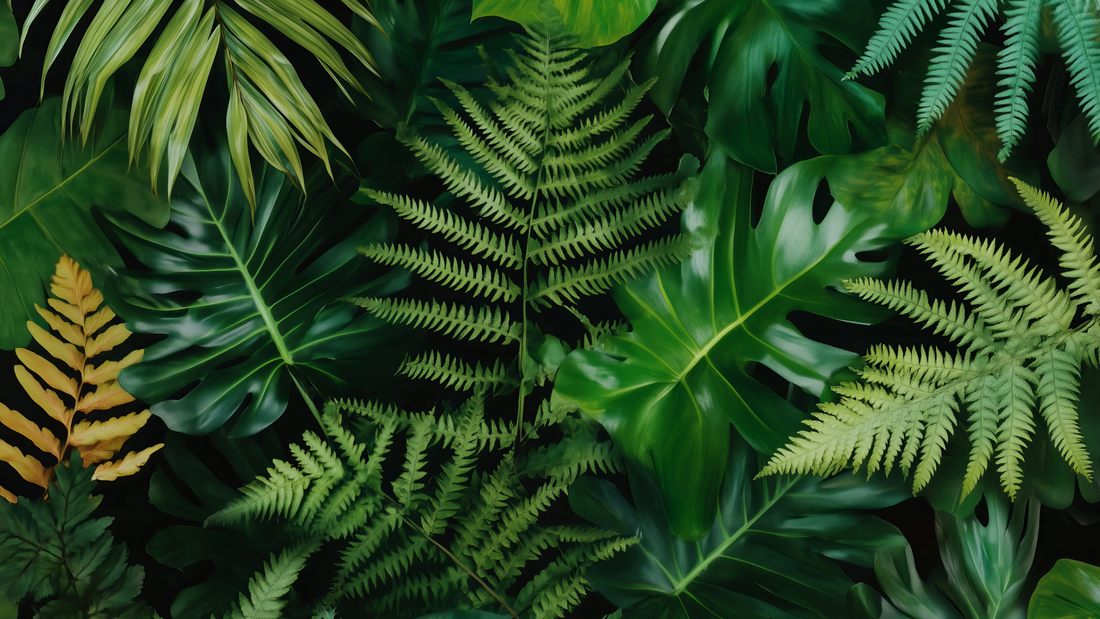
How to Plant Jungle Plants in Florida
Share
How to Plant a New Jungle Plant in Your Florida Home
Adding lush jungle plants to your Florida home is one of the easiest ways to bring vibrant life, shade, and tranquility to your outdoor space. With the region’s warm climate and fertile soil, it's no wonder Florida homeowners are turning their backyards into lush, tropical paradises.
This guide will walk you through everything you need to know, from the benefits of jungle plants to the step-by-step process for planting and maintaining them. Whether you’re enhancing your curb appeal or creating your dream outdoor retreat, getting started with jungle plants is easier than you think.
Why Add Jungle Plants to Your Home?
Jungle plants bring more than just aesthetic appeal. Incorporating outdoor greenery can improve both the environment and your quality of life. Here are a few key benefits:
- Environmental Impact: Plants act as natural air purifiers, absorbing CO2 and releasing oxygen. They can also mitigate heat by creating shaded spots within your yard.
- Health Benefits: Spending time in green spaces reduces stress and promotes mental well-being.
- Biodiversity: Jungle plants attract pollinators such as butterflies, bees, and hummingbirds, contributing to the local ecosystem.
With numerous advantages, jungle plants are an excellent addition to the Florida landscape.
Choosing the Right Jungle Plant for Your Florida Home
Selecting the right jungle plant is essential to setting yourself up for success. Florida’s climate makes it uniquely suited to a wide range of tropical plants, but you’ll want to pick plants that thrive in your specific environment and soil. Here are some popular options:
- Areca Palms: Perfect for creating privacy and adding a sophisticated tropical vibe.
- Hibiscus 'Seminole Pink': A flowering shrub that offers a splash of stunning color.
- Selloum (Philodendron bipinnatifidum): A large, dramatic plant with eye-catching leaves.
- Bird of Paradise (Orange Bird of Paradise): Beautiful and hardy, this plant brings a bold, exotic feel.
- Clusia: A hardy plant ideal for creating green hedges.
When shopping, consider the size, light requirements, and maintenance level of each plant.
Step-by-Step Guide to Planting Jungle Plants
Planting jungle plants is a rewarding process that, when done correctly, ensures healthy growth. Here’s a simple guide to get you started:
Step 1. Prepare the Location
- Choose the Perfect Spot: Assess your yard for the ideal location based on the plant’s light and shade requirements. Most jungle plants thrive in partial to full sunlight.
- Test the Soil: Florida boasts sandy soil, but depending on the plant, you may need to amend it with organic matter, compost, or nutrient-rich soil.
Step 2. Gather Materials
Make sure you have the following tools and supplies:
- The plant of your choice (available locally or through online services like Jungle Plants)
- Gardening gloves
- A shovel or spade
- Organic mulch or compost
- Watering can or garden hose
Step 3. Dig the Hole
- Size Matters: Dig a hole twice as wide and slightly shallower than the plant’s root ball. This gives roots enough room to spread and anchor.
- Loosen the soil at the bottom of the hole to facilitate better root growth.
Step 4. Place the Plant
- Gently remove the plant from its container, taking care not to damage the roots.
- Place the plant in the hole with the top of the root ball level with the ground.
Step 5. Fill It In
- Use the soil you dug up earlier to fill in around the root ball. Lightly tamp the soil as you go to remove air pockets.
Step 6. Water and Mulch
- Water Generously: Drench the plant immediately after planting to help the roots settle.
- Add Mulch: Spread a 2–3 inch layer of mulch around the base, keeping it a couple of inches away from the stem to prevent rot.
Tips for Maintaining and Growing Your Jungle Plant
Congratulations—you’ve planted your new jungle plant! Now it’s time to keep it healthy and thriving. Here are a few tips for ongoing care:
- Watering: Most jungle plants prefer moist but not waterlogged soil. Water deeply around 1–2 times a week, depending on the season.
- Fertilizing: Use a balanced fertilizer during the growing season for optimal health and growth. For example, use a slow-release fertilizer every 2–3 months.
- Pruning: Regularly remove dead or browning leaves to encourage new growth and maintain the plant’s appearance.
- Pest Control: Watch for common pests like aphids or mealybugs and remove them with insecticidal soap when necessary.
Best Practices for Landscaping with Jungle Plants
Transform your outdoor space by grouping jungle plants strategically to create a lush, tropical vibe. Here are some landscaping tips to consider:
- Layering: Use multiple heights to add depth and drama. Place taller plants like Areca Palms in the back, with smaller shrubs and flowers like Hibiscus in the foreground.
- Paths and Borders: Line walkways with smaller jungle plants or colorful ground covers to create a sense of flow.
- Focal Points: Use striking plants like Bird of Paradise or Selloum as a centerpiece in your garden design.
- Coastal Landscaping: Florida homeowners near the shore can create a seaside oasis with Cocoplum or Silver Buttonwood, which tolerate salty air.
Looking for jungle plants to elevate your landscaping? Online stores like Jungle Plants deliver directly to your doorstep, ensuring convenience and quality.
Create Your Tropical Paradise Today
With the right plant selection, proper planting techniques, and consistent maintenance, you can turn your Florida home into the jungle-inspired retreat of your dreams. Jungle plants don’t just bring beauty to your space—they provide environmental benefits, foster biodiversity, and offer a slice of serenity in your daily life.
Have questions about your planting project? Share this post and join our community of gardening enthusiasts to exchange tips, stories, and photos of your lush creations. Need some supplies? Check out Jungle Plants online for top-quality plants, delivered straight to your door!
